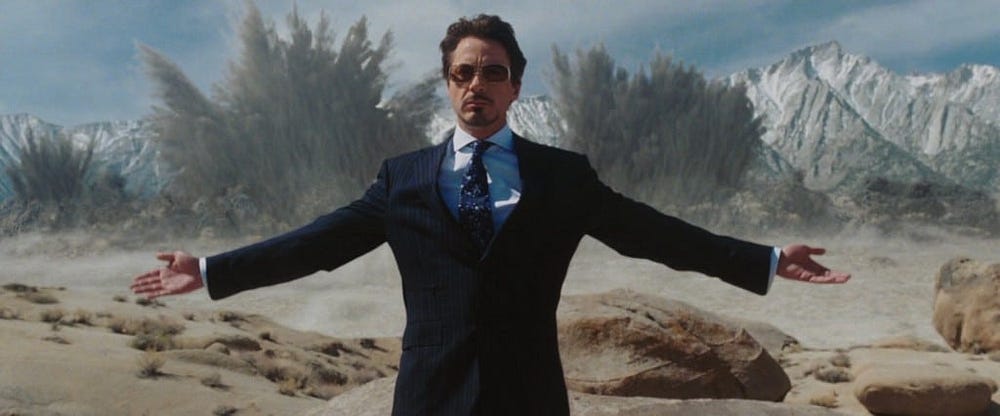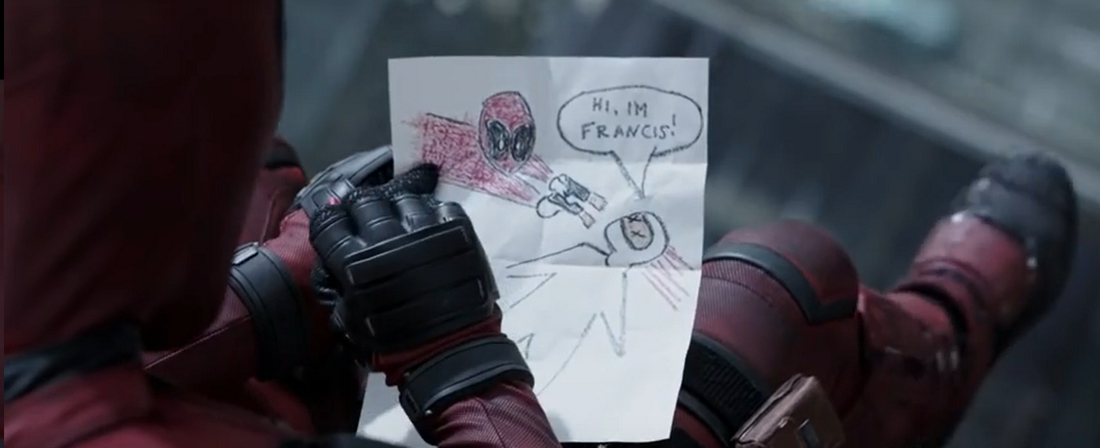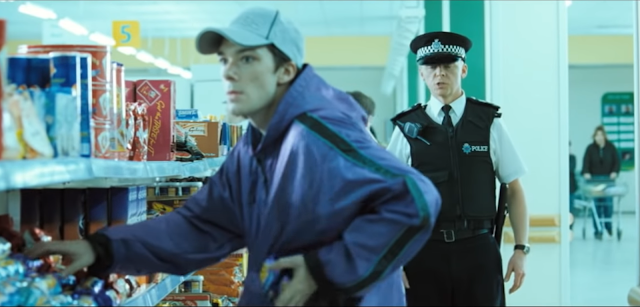Micro Elements
Macro Elements:
Cinematography
8 Shot Types:
Extreme Long Shot:
An Extreme long shot is a shot that covers a vast amount of area, the focus is mainly on the environment and area around the character, who is barely visible. It’s commonly used to establish the location of the scene as its most of the screen.
The extreme long shot shows the audience the location and sets the scene and tone
Long Shot:
A Long Shot is a shot that presents the character from the top of its head to the tips of its toes, its used to place the character in its surroundings and give it a relationship with the environment. Still has information about the background but its focus is now the character.
This shot shows the audience the subject giving it size relative to the background and tells the audience things about the character like body language.
Medium Long Shot:
A Medium Long Shot shows the character but above the knees, which Is also why it's called the three-quarter shot. It’s the middle ground between the longshot and the medium shot, despite the character being a lot of the frame it does tend to favor the background rather than foreground.
The medium long shot communicates a lot of body language by having enough of the body in frame to pick out things like posture or stance.
Medium Shot:
A Medium Shot is commonly used for dialogue as the character is shot from above the waist with little background in frame but still enough to give you information. Also, this shot shows off more body language as its closer to the character.
This shot communicates to the audience by showing us more detail about the skin, clothes, posture, body language while retaining the background setting.
Medium Close-Up:
The Medium Close-Up is a shot that frames the subject from above their head down to their chest. The idea of this shot is to show the actors facial expressions and reactions, in addition it can be used for conversation between characters. It's also used a lot in news.
This shot communicates by making itself seem like a conversation, using just the head and sholders makes it a more formal, serious shot, at least in the news viewpoint.
Close-Up:
The Close-Up shot is used to show the subject in much greater detail that you wouldn’t see in other shots before this and it will show a significant amount of emotion in the eyes and facial expressions which mostly take up the frame.
Close-ups communicate by being a more intimate shot, you get to see the eyes, for example this picture:
enables the audience to see the madness in Jacks eyes and smile
Big Close-Up:
The Big Close-Up is just the subjects face, starting from the middle of the forehead to just above the chin. This shot exploits the Social Triangle, eyes and mouth are the focus. It’s a very intimate emotional shot showing details you wouldn’t see, and you never get this close to someone unless they're your partner. Used for extreme emotion or detail of a prop.
The big close-up purely uses the social triangle to communicate with the audience as that’s all they can see.
Extreme Close-Up:
Extreme Close-Up is used to point out a detail that is so miniscule that you’d miss it in any other shot. Focus is on this one-minute detail and nothing else. An example would be a reflection in the eye.
Communicates through the use of a reflection for example, shows details you wouldn’t see and gives the audience an “insider scoop”
4 Camera Angles
High Angle:
The High angle shot is commonly used to create a sense of weakness and inferiority as you’re looking down on the character like you would do a bug.
But that’s not its only use for example this frame of Deadpool
on top a building isn't used to make him feel weak but to give a sense of depth between him and the groundLow Angle:
The low angle shot is the opposite to the high angle. This shot is used to give the subject power and a sense of superiority. It’s the shot to use if you intend to make a character look intimidating and strong in contrast to a weak character.
Eye Level:
The Eye Level shot is a more comforting neutral shot, it doesn’t show power either side, it gives more of personal real life feal as you can imagine yourself there as you’re looking at the characters eyes
Oblique/Canted Angle:
Also known as the Dutch Angle, this shot brings a feel of disorientation and uneasiness to the scene, it could show the deterioration of a character's mental state or it could be inferring danger and chaos
Camera Movement
Camera Pan:
A Camera pan is the movement from left to right from a central point. The camera itself doesn’t move because the pan refers to the fact that it swivels from a stationary position. Example here:
The pan shot is used to establish the location as it gets a 180 view of the whole scene. it can be used to track movement like a ball being kicked for example, or a person moving. It can also elevate tension depending on the speed of the pan, for me a slow pan would infer danger, horror or mystery.
Camera Tilt:
A Camera tilt is basically the exact same as the camera pan but on a vertical axis (up and down). Like panning, tilting can be used to mimic human head movements like when you scan a room.
A downward tilt is used to observe the action, taking it from the ground to the sky. While an upward tilt is used to create a sense of intimidation, starting at the feet rising to the head as an example. Shows all the character, leaving you pointed up at it to show power.
Microanalysis:
Movie: Hot Fuzz (0:00 - 2:07)
Minor Notes: Pete is the thief, Nick is Simon Peg, Danny is Nick Frost
Lets focus on the first 12 seconds for now.
The pan right showing Pete shoplifting and then Nick sliding left into shot with him being the focus at the start tells us 2 things, that its going to be a funny scene and Nick is the important character as the focus shifts to him from Pete. Also the fact that's its a Medium Long Shot helps establish the location and the spacial relationship between the characters
. From this it cuts to and from Pete and Nick as the camera goes from a Medium Close-Up to a Close-Up. This shot lets us compare the characters reactions and get a feel for their respective emotions. As it zooms in on Pete you can see the shock, realisation and fear as the camera gets closer and closer to his face and with Nick you can see the anger and grumpiness in his face which progresses each zoom in.
Sound
Sound Types:
Dialogue:
Dialogue is any sound that are spoken from a character. Dialogue is used to help establish characters and their relationships.
Music (score) :
Music is used to give the scene more emotion and a special feel. Audiences can understand tone and genre just by listening to the music score. For example the imperial march
Sound Effects:
Sound effects are added in post to elevate a scene and add things that the mic wouldn't have picked up on set. like a glass smashing, door opening, explosion from ship.
Clip Analysis: The Hunt
Athena = bad black hair lady, Crystal = good blonde lady
The pig makes a big slam followed by suspenseful non-diegetic music. The men start shooting their guns at the pig. The suspenseful music is played here because at this point we're in the eyes of the men and the music plays because we're under the illusion that stuffs about to go down but it ends up being the pig. The music could represent the adrenaline they're feeling in the moment. Its brought to a screeching halt when Athena shouts stop, or when the men realise its just the pig.
When there's little sound you can hear the slight hum of crickets and the general night sounds, this just adds a layer of realism and ambience as that's what you would hear if you were there.
It goes from no music to more spy or mission type music when one of the men gets shot in the head and Crystal is revealed, this music changes slightly to a more mysterious tone when we lose the positioning of the men, this immerses us as a viewer an hlaf puts us in crystals position, until the tone is broken when she grabs the gun.
Her gun clicks signifying that shes out of ammo. The music is then forced to change as an arrow flys into the wall next to crystal, making the music shift to Athena's side. The music boosts the situation, it enhances the problem that crystals out of ammo and has lost her dominance. This tone is changed when she stabs Athena and is onto the next enemy.
A nice "reveal" sound plays when the camera tilts down to a gun in-between the two characters which gives a less serious feel. This tone is enhanced when she's got the gun and the mag is pulled but she knows she has a bullet in the chamber, the music leads into the shot adding comedy along the way.
The music starts to lead into the final kill and eventually does, having the climax of the beat when she shoots the sniper. Once she does no music plays, symbolising that its the end of the fight and everything is calm... until a big tackle sound followed up by unexpected tense music happens which continues into the fight. Having the end hit with the pipe match the music, telling us its over for good.
Mise-En-Scene
What is Mise-En-Scene?
It's everything you can see in the scene. The visual Information.
The 5 Elements consist of:
- Body language + Facial Expressions
- Location, Setting, Props
- Costume, Hair & Make-Up
- Lighting & Colour
- Position Of Characters & Objects
Props - Props are property, they can give a sense of: genre, time, location etc.
Setting - The setting is the where and when. the location. it also gives a sense of the genre.
Costume, Hair + Make-Up - Instant indicator of a characters personality, status, job, background.
Facial Expressions / Body language - Shows the characters emotions and could give an insight of a character.
Positioning within frame - Draws attention to certain characters or objects and it can indicate relationships between characters. for example if they're close they are friends.
Foley:
Unfortunately My Foley i edited video got corrupted and i lost the video but i can describe what we used for different sounds. The task was to use foley to dub over a silent copy of this bridget jones fight scene
For the sound his jacket would make we rubbed against a fire extinguisher cover, but before this we tried rubbing against all different materials before we settled for the cover.
Next, for the fight sounds me and Tyler went into the creative media tunnel outside and proceeded to make a bunch of weird grunts and noises into the zoom mic. It was an experience.
- Shot Reverse Shot
- Eyeline Match
- 180° Rule
- Establishing Re-Establishing Shot
- Match On Action









Comments
Post a Comment